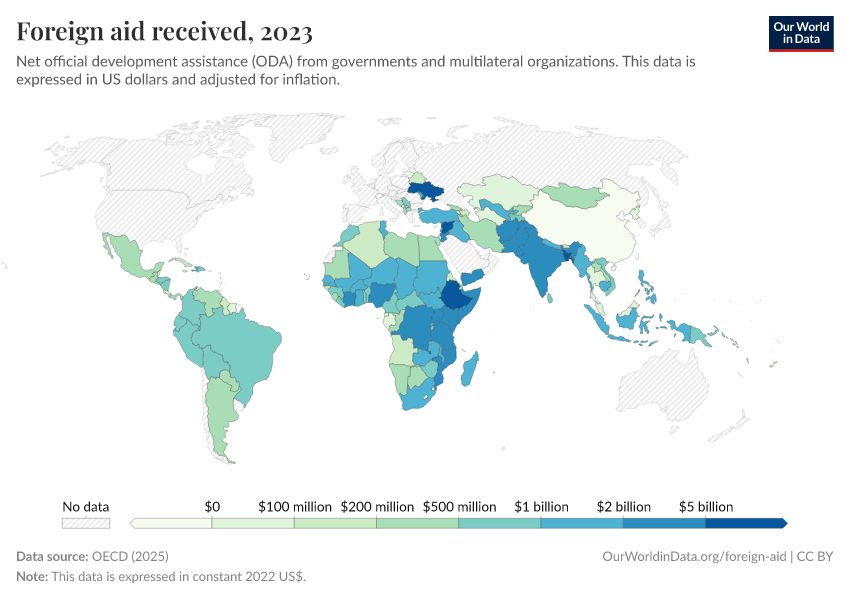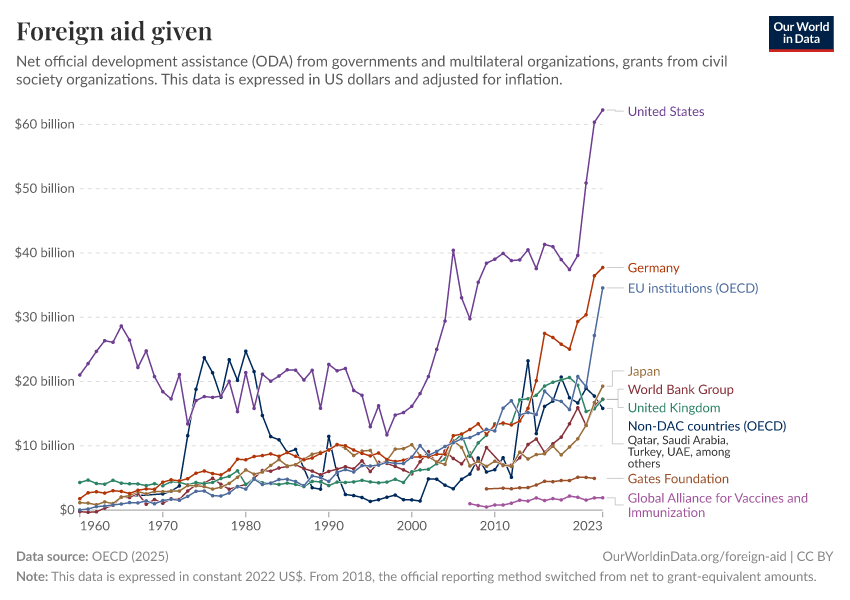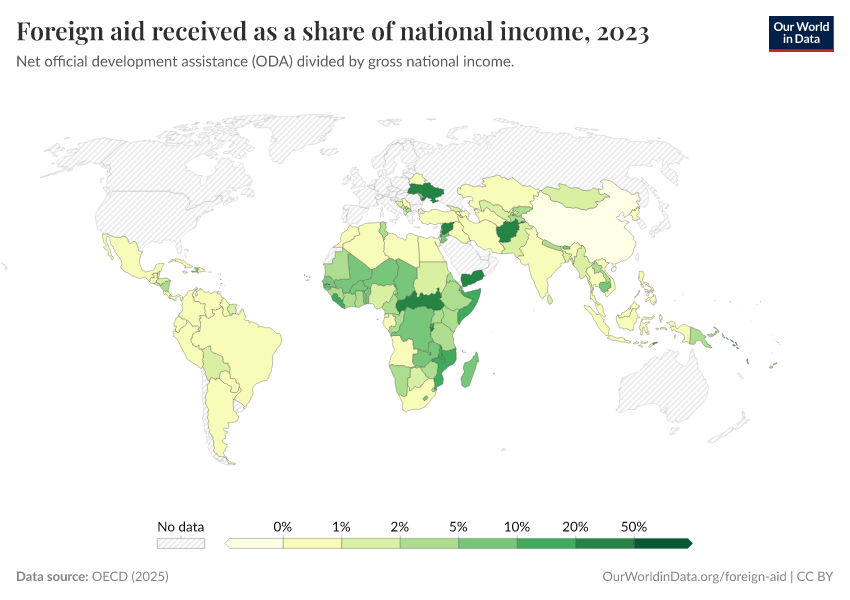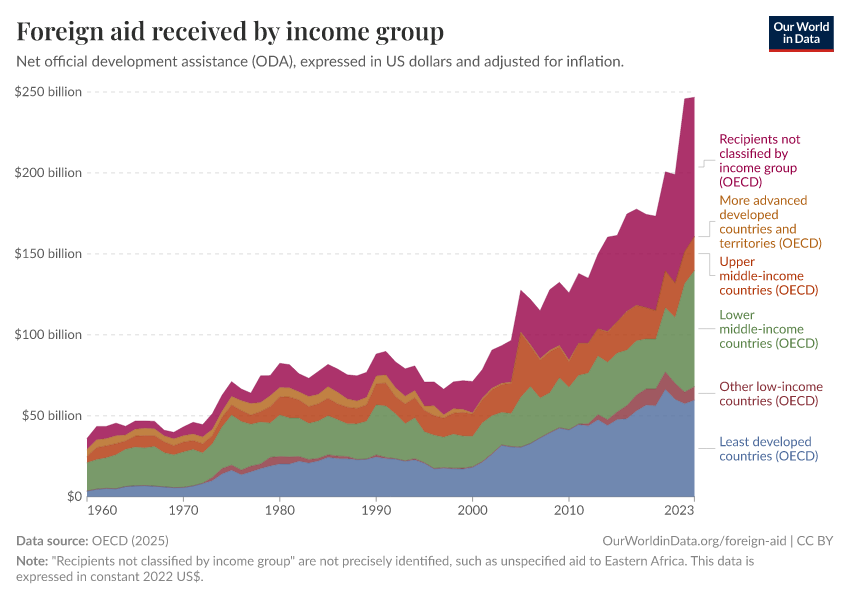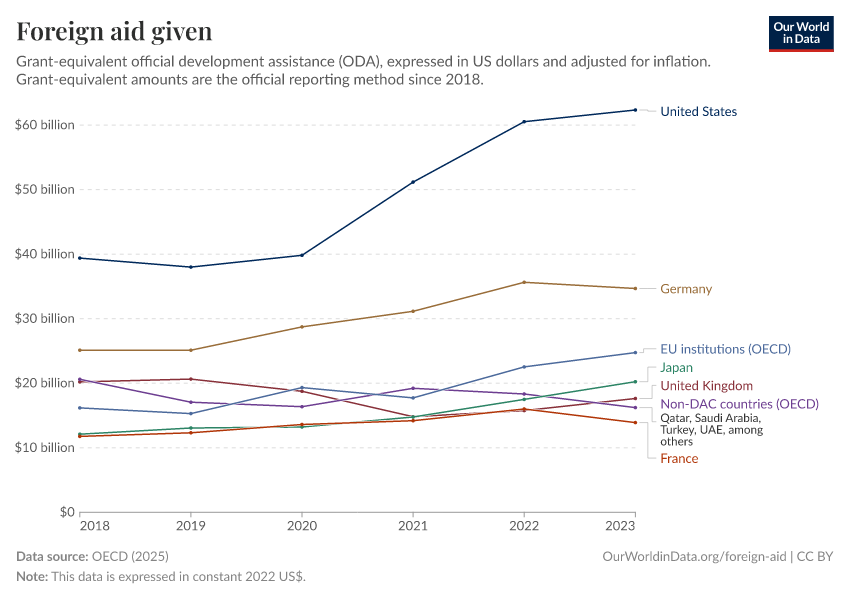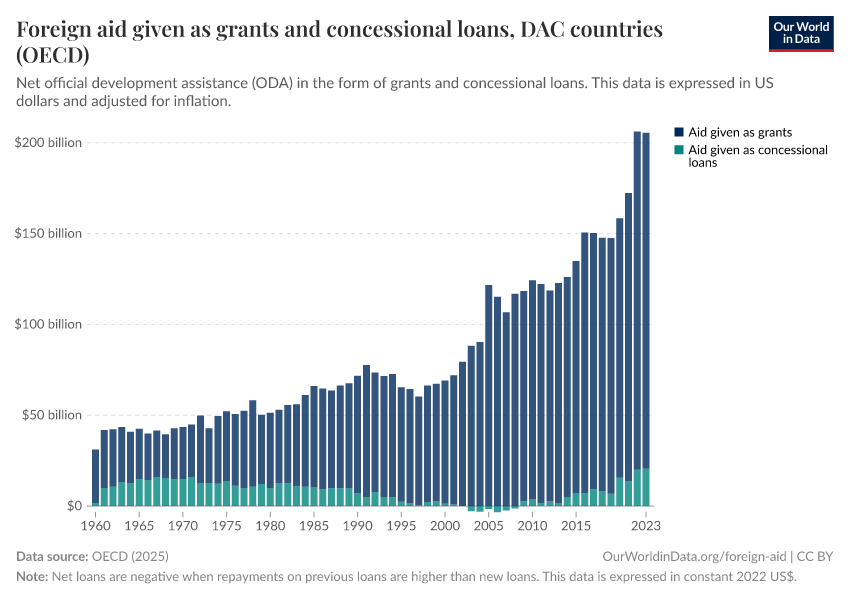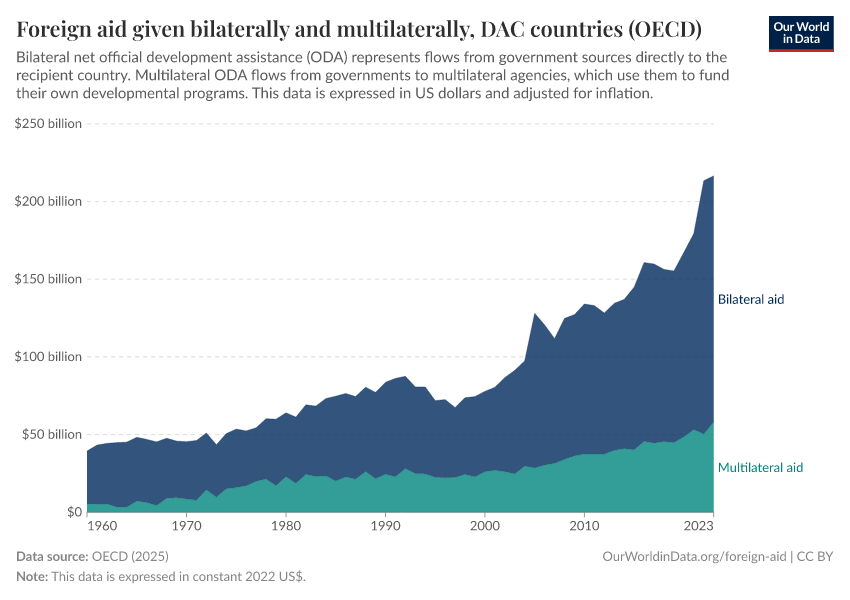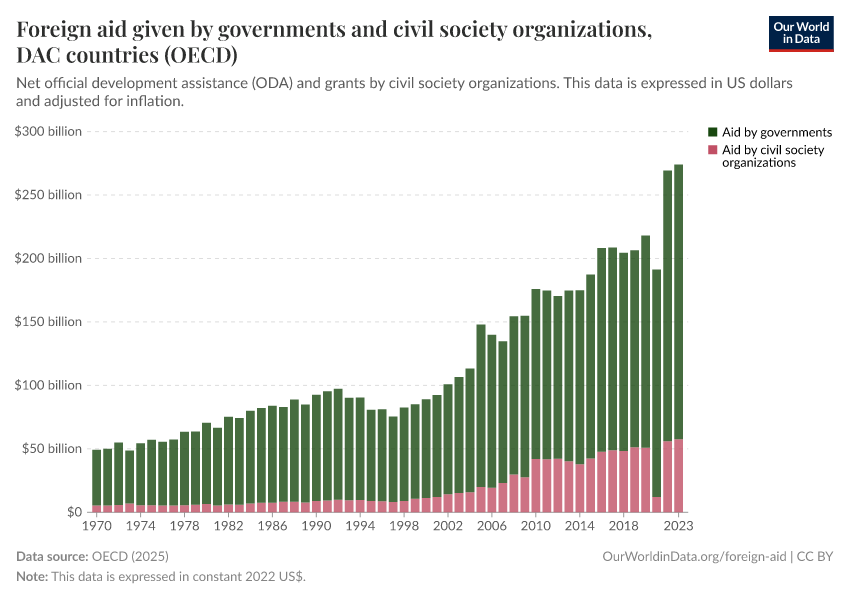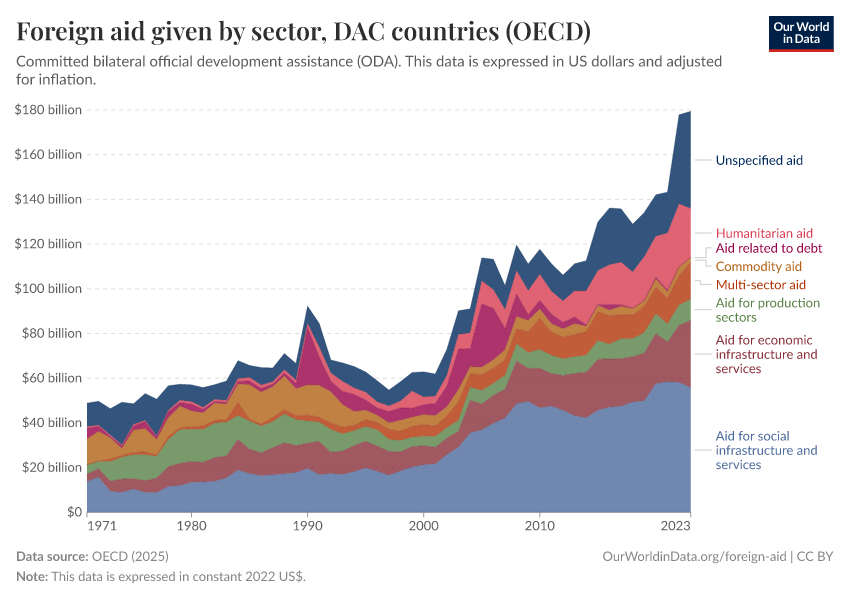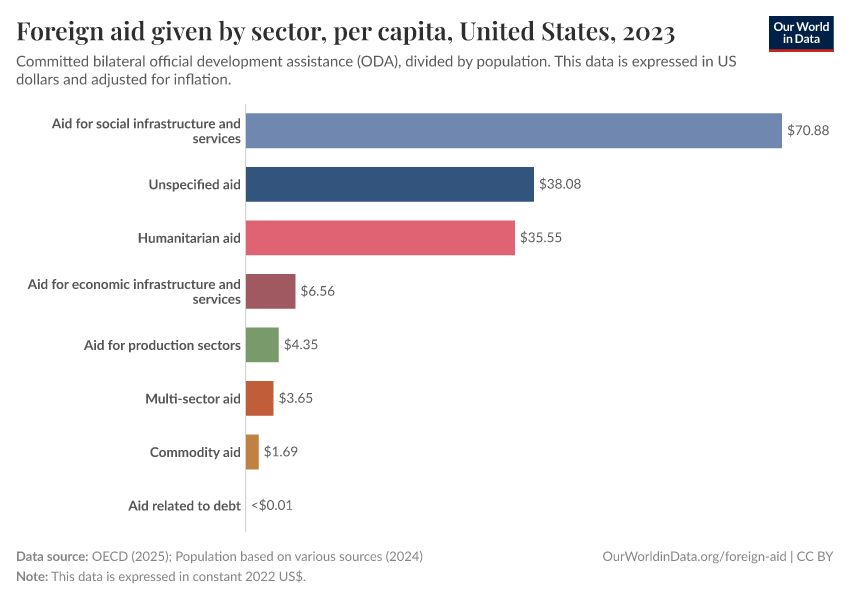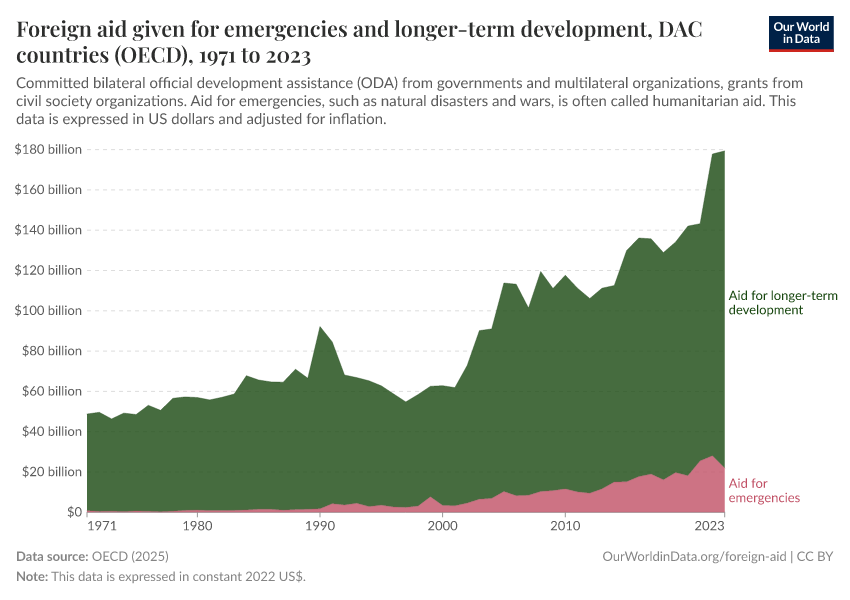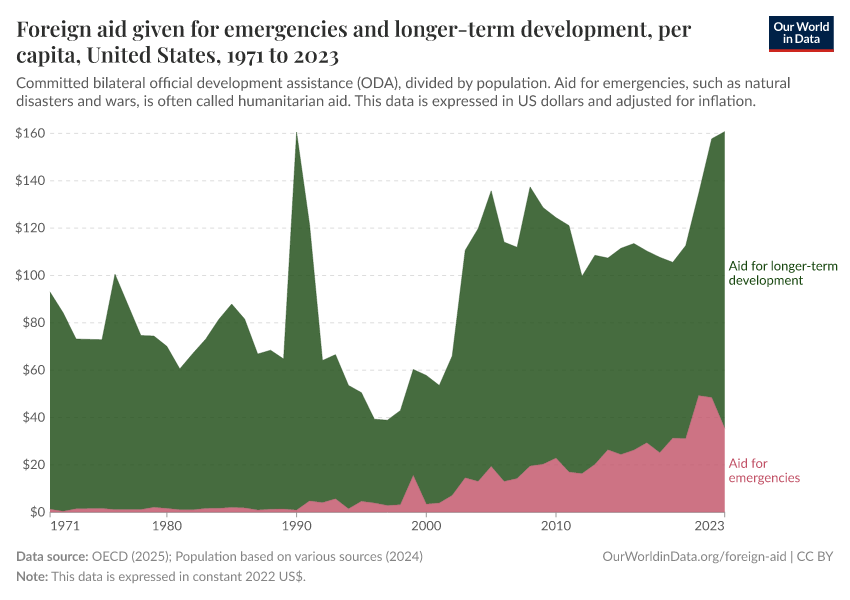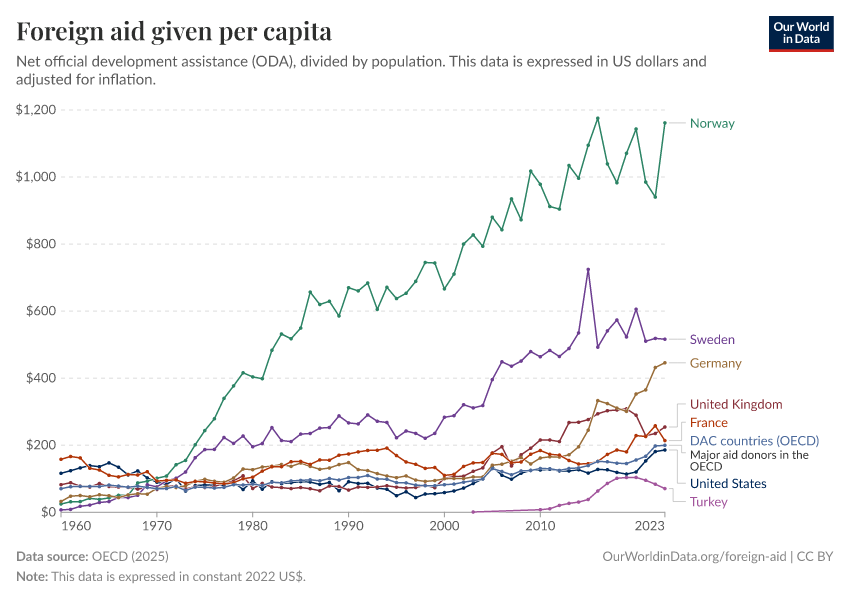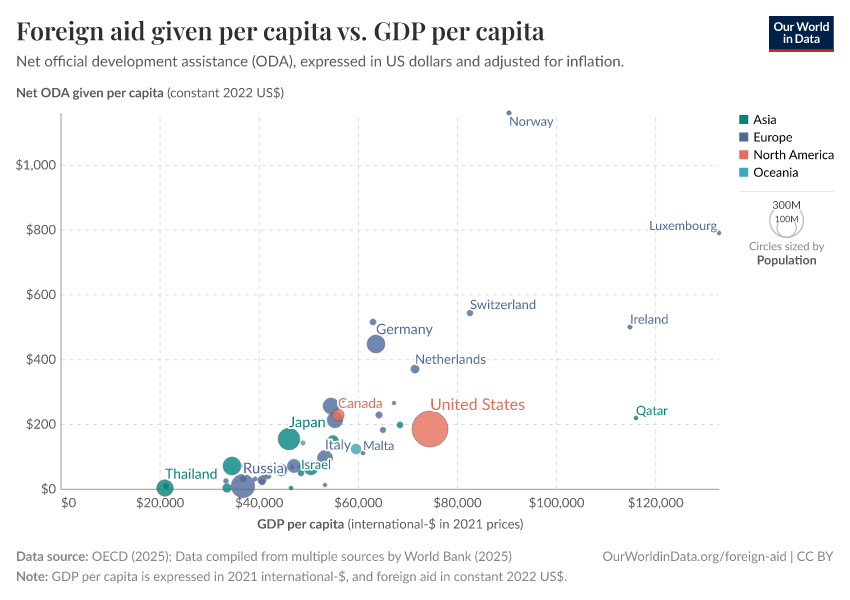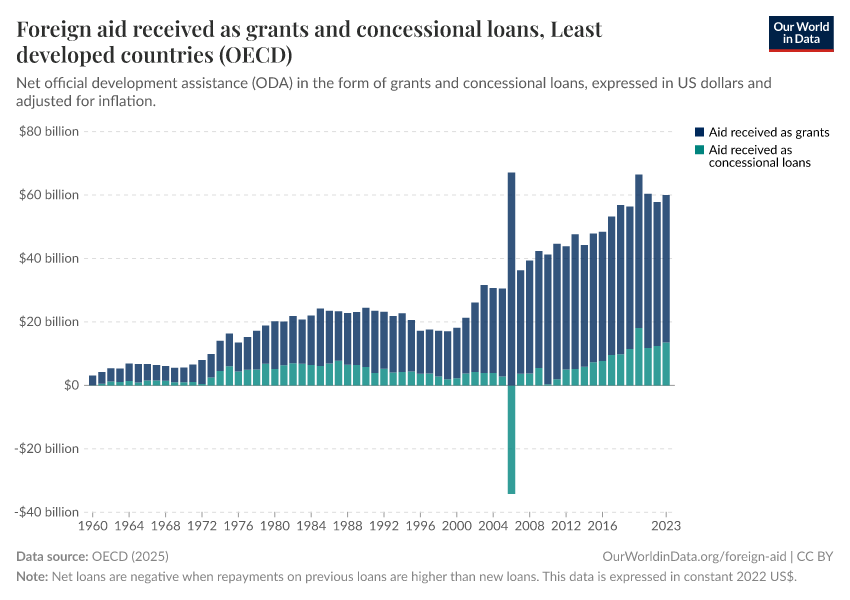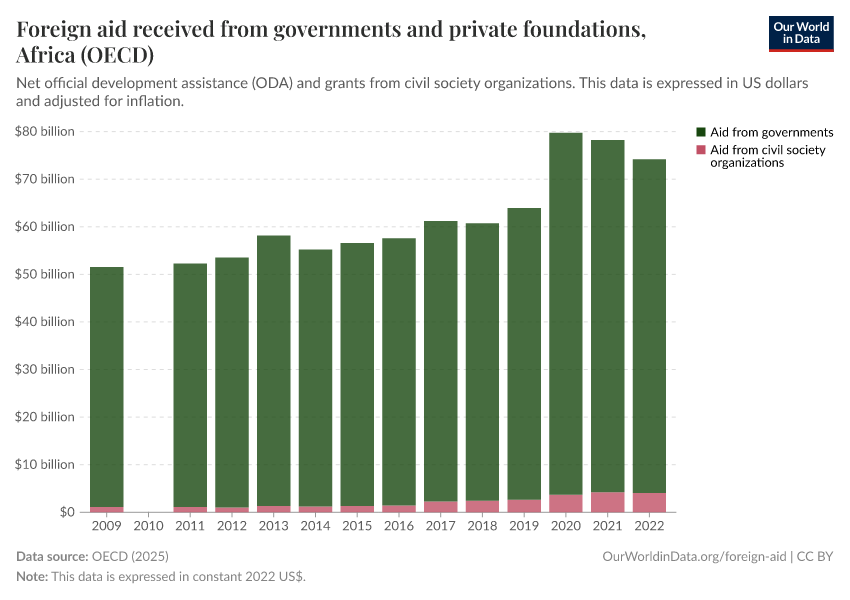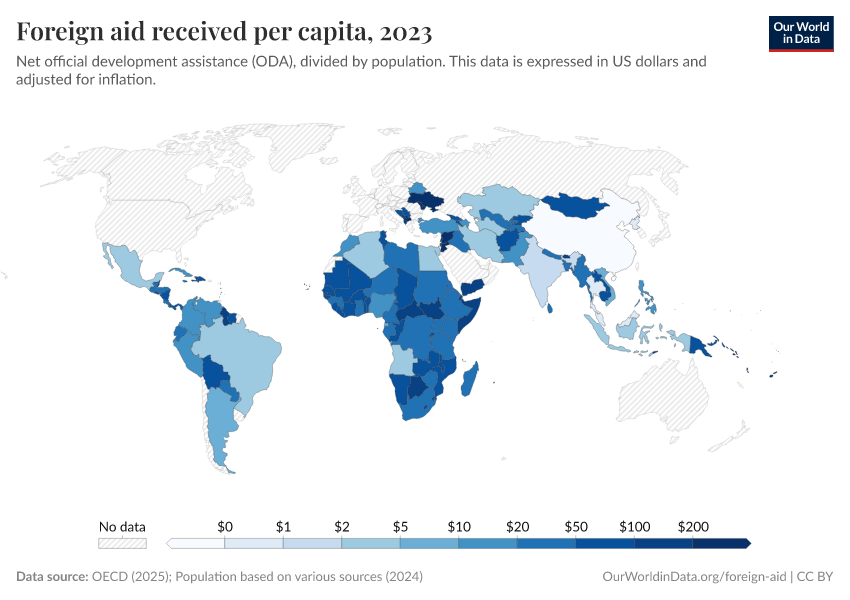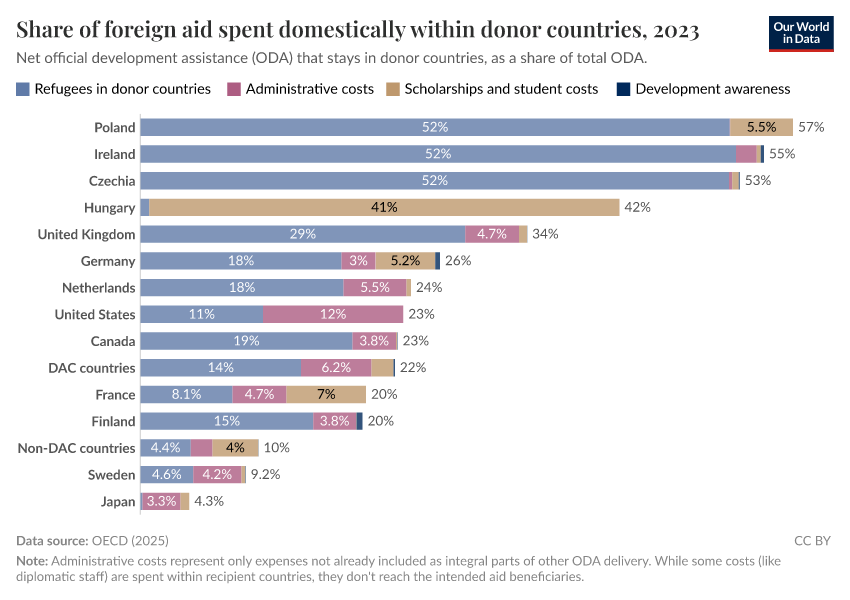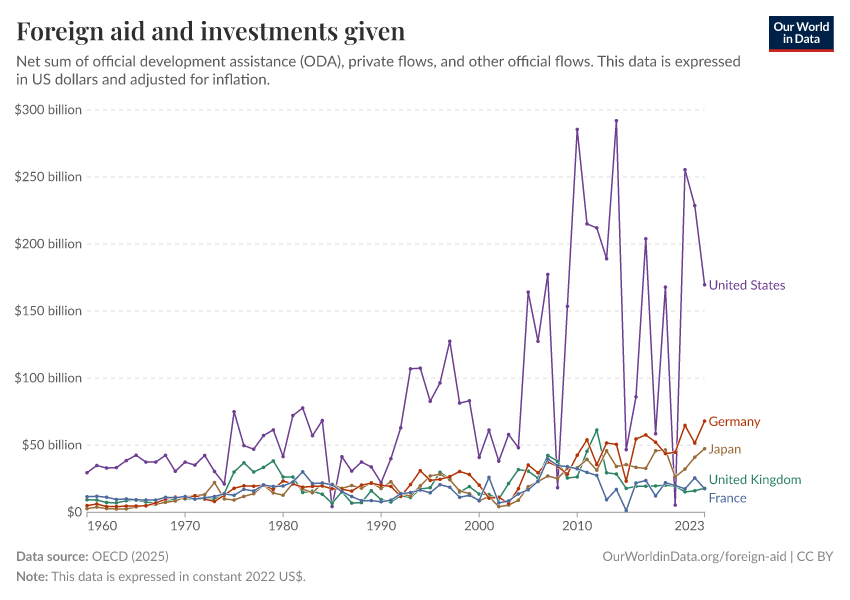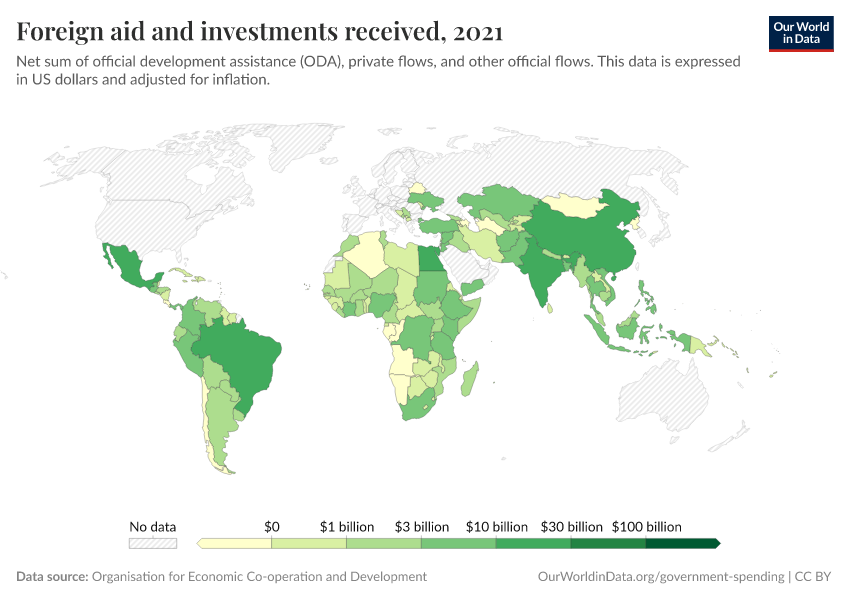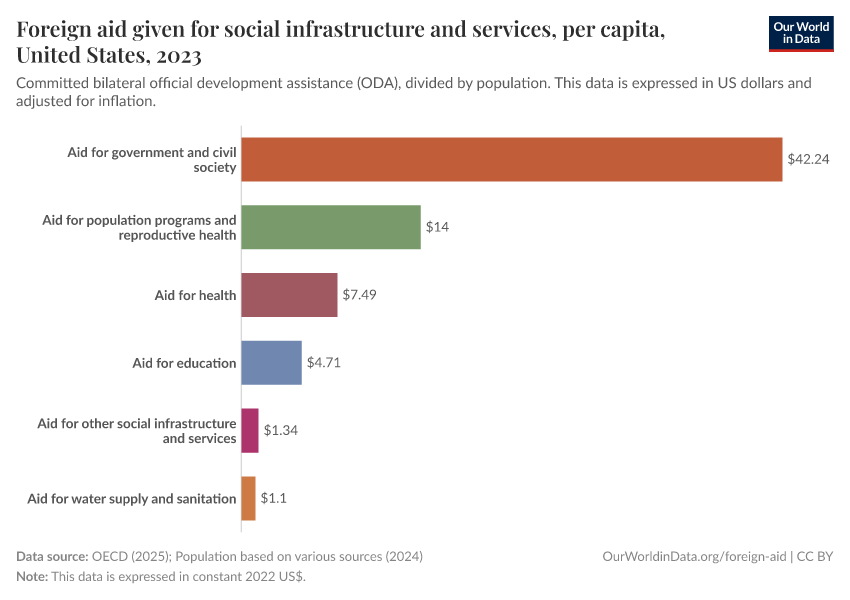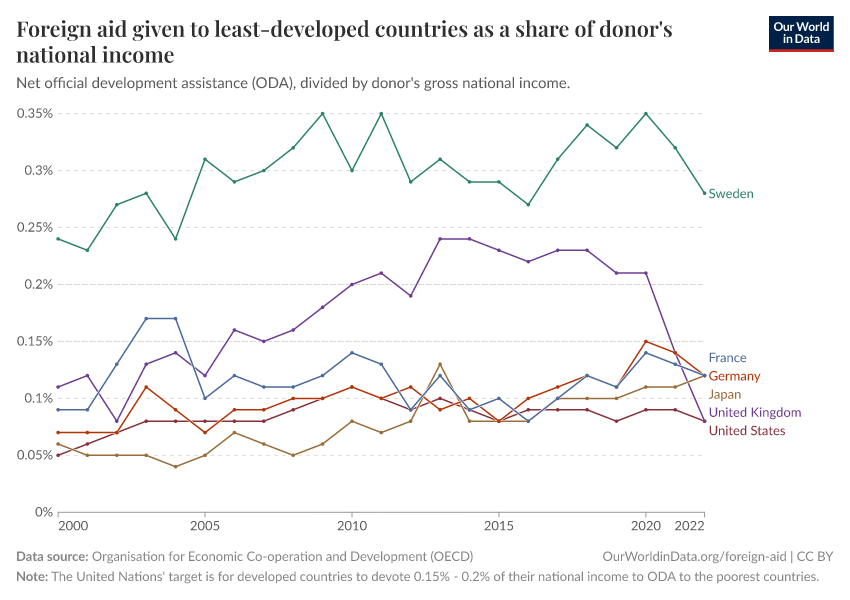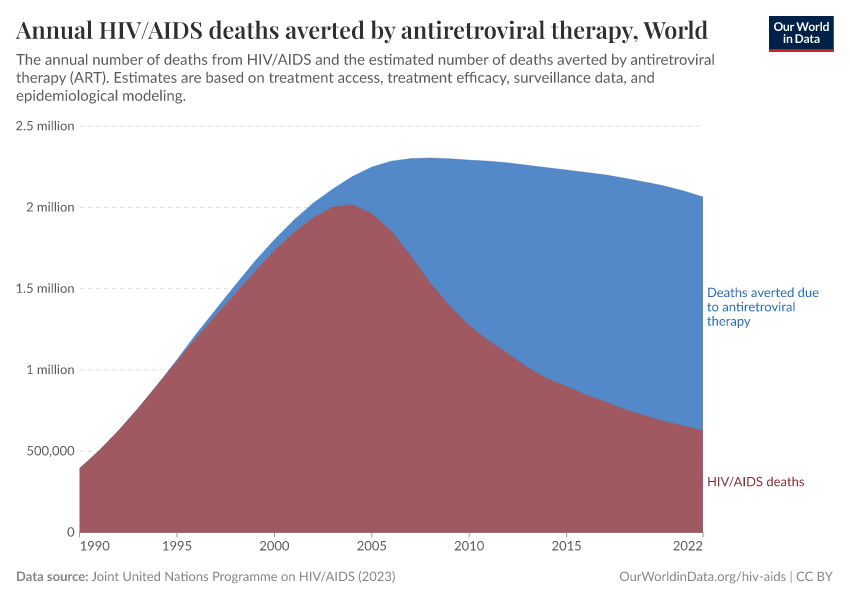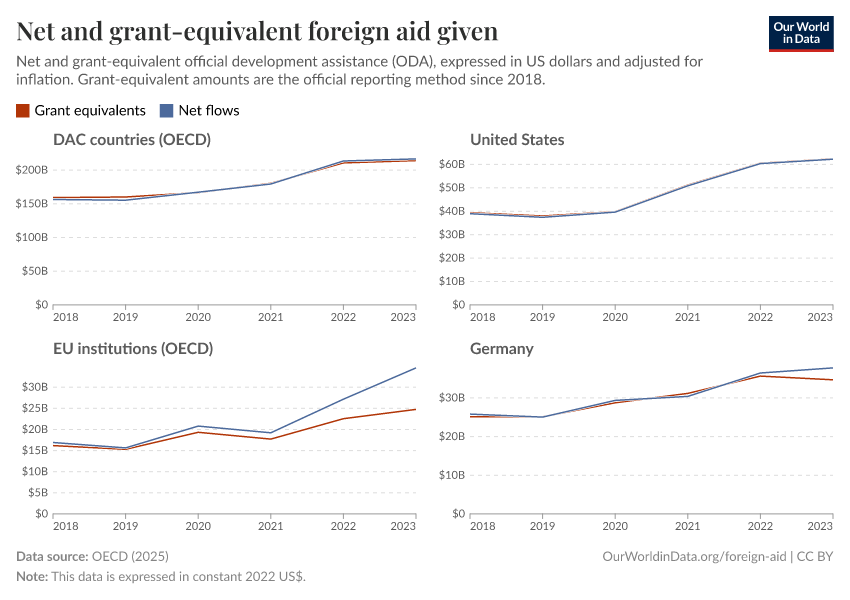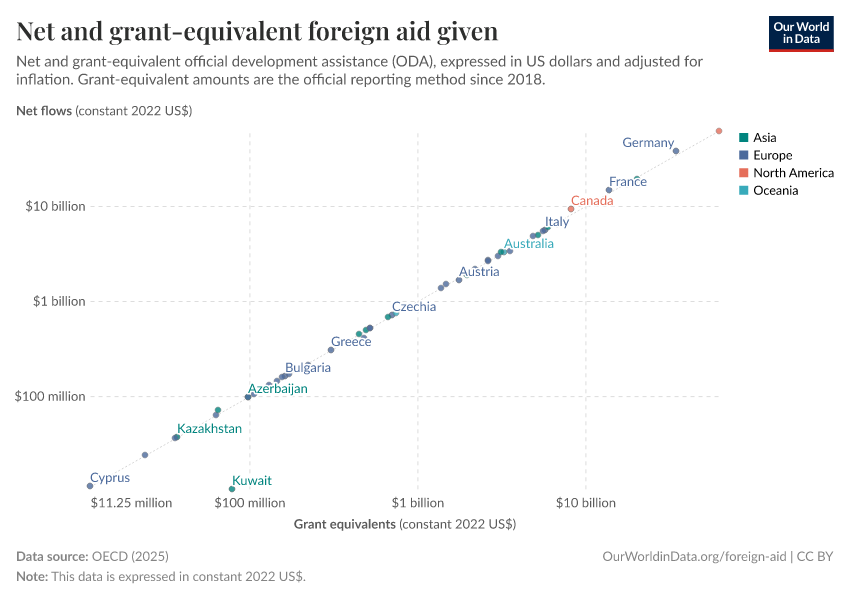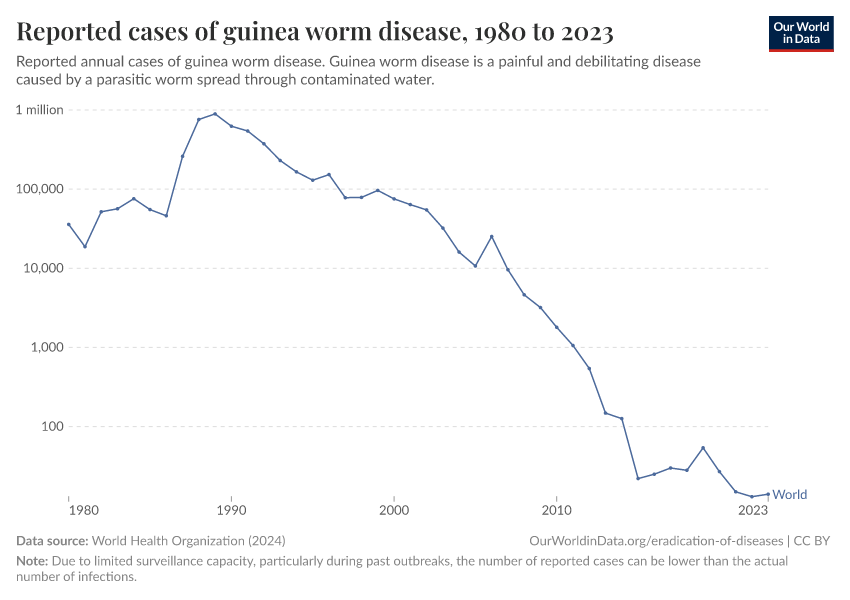Foreign Aid
Foreign aid is the provision of money, goods, or services from one country to another, usually to support the people in a lower-income country. It can be used to build public infrastructure, improve health or education, increase economic growth, reduce conflict, support institutions, or recover from disasters or crises.
Supporters of aid highlight successful organizations and programs, such as PEPFAR, which has saved millions of lives from HIV and AIDS; GAVI, which has vaccinated hundreds of millions of children against diseases; USAID and private foundations, which supported the Green Revolution to increase crop yields; and the Carter Center, which has led the near-eradication of guinea worm disease.1
But foreign aid projects can fail and, in the worst cases, cause harm. Foreign aid can disrupt local economies and political systems and make governments more responsive to foreign powers than their own citizens.2
Critics of foreign aid point to failures like the WHO’s Global Malaria Eradication Program in the 1950s and ’60s, or India’s aid-supported family planning and sterilization program in the 1970s.
Foreign aid comes in many forms. Governments provide most assistance, but civil society organizations and international organizations, such as the World Bank, also play an influential role. Aid is often directed towards the poorest countries, but other countries that are not among the poorest also receive significant amounts. Some aid supports government operations generally, but most aid is focused on specific sectors.
On this topic page, you can explore data on who gives and receives foreign aid, the different types of assistance, and a few examples of when it has been successful.
Research & Writing
For many of us, it doesn’t cost much to improve someone’s life, and we can do much more of it
Most countries spend less than 1% of their national income on foreign aid; even small increases could make a big difference.
What is foreign aid? How “Official Development Assistance” is measured
Foreign aid measurement is complicated — what exactly counts as Official Development Assistance, what doesn’t, and how much is actually spent abroad?
How much foreign aid is spent domestically rather than overseas?
In many countries, a significant share of aid is spent domestically on hosting refugees, offering student scholarships, and administrative costs.
Key Charts on Foreign Aid
See all charts on this topicAcknowledgments
We thank Elena Bernaldo de Quirós, Saloni Dattani, Harsh Desai, Edouard Mathieu, Hannah Ritchie, Jorge Rivera, Pablo Rosado, and Max Roser for their helpful suggestions and ideas for this topic page.
Endnotes
For more research and data on these topics, see our pages on HIV / AIDS, vaccination, eradication of diseases, crop yields, and neglected tropical diseases.
For a more detailed overview of aid’s positive and negative effects, read Qian, Nancy. 2015. Making Progress on Foreign Aid. Annual Review of Economics 7: 277-308.
Cite this work
Our articles and data visualizations rely on work from many different people and organizations. When citing this topic page, please also cite the underlying data sources. This topic page can be cited as:
Bastian Herre, Pablo Arriagada, Simon van Teutem, and Hannah Ritchie (2024) - “Foreign Aid” Published online at OurWorldinData.org. Retrieved from: 'https://ourworldindata.org/foreign-aid' [Online Resource]BibTeX citation
@article{owid-foreign-aid,
author = {Bastian Herre and Pablo Arriagada and Simon van Teutem and Hannah Ritchie},
title = {Foreign Aid},
journal = {Our World in Data},
year = {2024},
note = {https://ourworldindata.org/foreign-aid}
}Reuse this work freely
All visualizations, data, and code produced by Our World in Data are completely open access under the Creative Commons BY license. You have the permission to use, distribute, and reproduce these in any medium, provided the source and authors are credited.
The data produced by third parties and made available by Our World in Data is subject to the license terms from the original third-party authors. We will always indicate the original source of the data in our documentation, so you should always check the license of any such third-party data before use and redistribution.
All of our charts can be embedded in any site.
